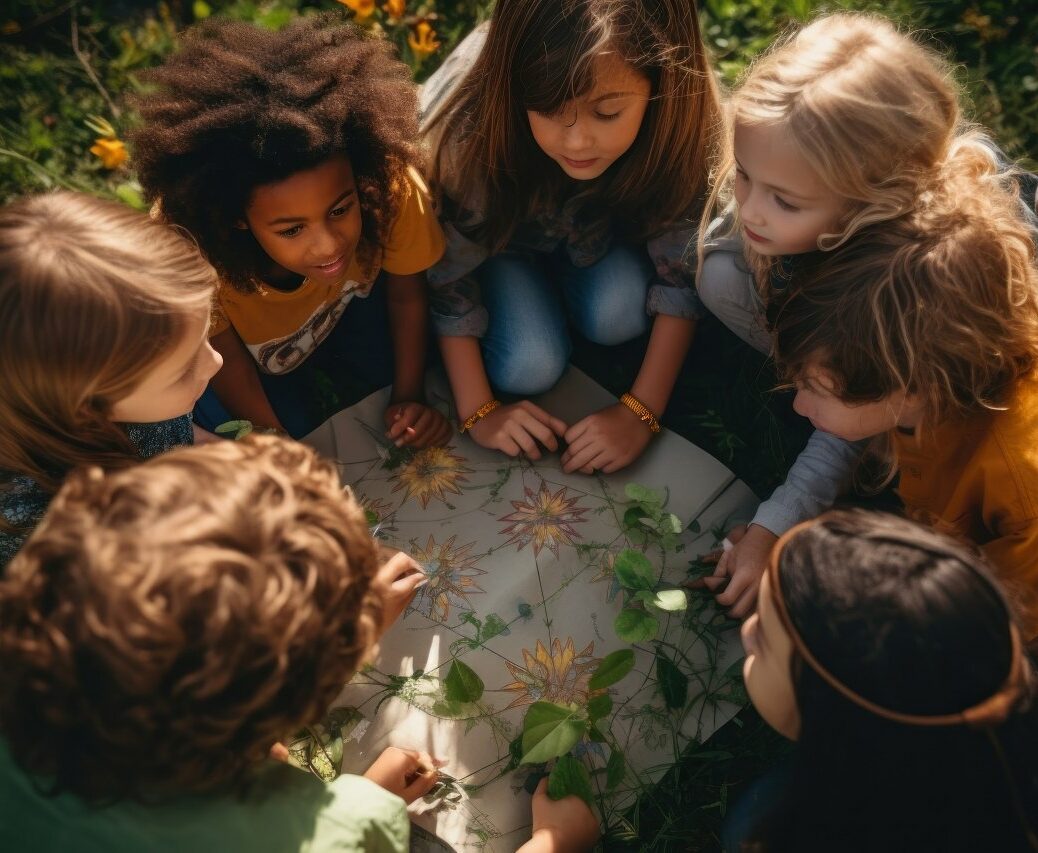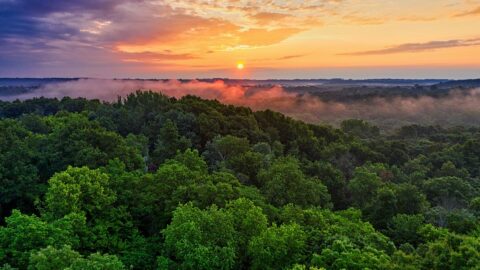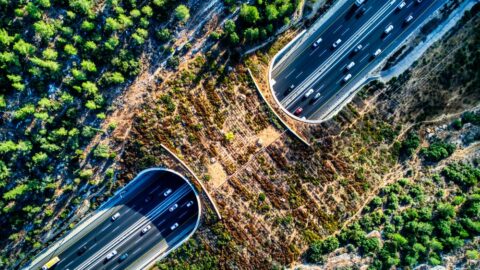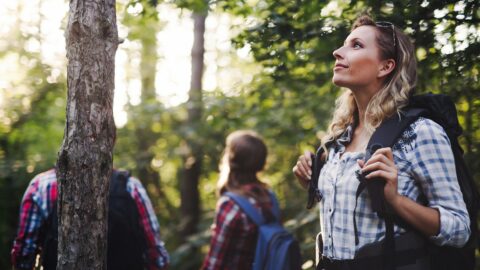Nature-based pre-schools and kindergartens, also called forest schools, are schools that use the outdoors as their primary classroom. Instead of sitting at desks, children might find themselves exploring a wooded area, identifying plants, or following the tracks of a small creature. It’s a far cry from the traditional preschool setting, where indoor activities and play often reign supreme. The rising popularity of these outdoor-centric schools stems in part from an increasing awareness of ‘nature deficit disorder’, a term highlighting the lack of nature interaction in today’s young generation, which can lead to a variety of health and cognitive issues.
The U.S. saw the introduction of these forest schools at the start of the 21st century. Their numbers have been steadily growing, with many parents and educators seeing the value of such an immersive nature experience. As of 2021, their presence has significantly expanded across the nation. As of 2020, there were 585 forest pre-schools or kindergartens in the U.S., according to the Natural Start Alliance’s Report “Nature-Based Pre-Schools in the U.S. – 2020 Snapshot“. States with the most forest schools were California (50), Washington (50), and Minnesota (40).
The benefits are clear: nature-based pre-schools offer kids hands-on learning experiences, promote physical health, nurture mental well-being, and foster a lifelong bond with the environment. This article delves deeper into the world of nature-based education, showcasing how it’s shaping a new generation of environmentally-conscious individuals.
Nature-Deficit Disorder: Symptoms of a Disconnect to Nature

The term “Nature-Deficit Disorder” was popularized by American author Richard Louv in his 2005 book “Last Child in the Woods.” It’s important to note that NDD is not recognized as a medical disorder. Instead, it’s a descriptive term for the range of behavioral problems arising from people, especially children, spending less time outdoors.
While NDD can affect people of all ages, children are especially susceptible. Urbanized environments, heightened screen time, and structured indoor activities have resulted in children having fewer opportunities for unstructured outdoor play. The implications are deep, affecting their health, well-being, and understanding of the world around them.
Several symptoms and manifestations have been associated with a lack of nature exposure:
- Decreased Physical Activity: Leading to obesity and associated health issues.
- Diminished Sensory Development: Particularly those tied to outdoor exploration, like touch and spatial awareness.
- Reduced Attention Span: Nature settings are shown to improve concentration and reduce symptoms of ADHD.
- Decreased Understanding of Ecosystems: A lack of understanding and respect for nature, leading to environmentally unconscious decisions.
- Increased Emotional Stress: Nature has therapeutic effects. A deficit can lead to feelings of anxiety, depression, and other mental health concerns.
And of course, the environment itself has suffered greatly from people feeling disconnected from nature and not valuing the importance of the ecosystems of which we are a part. We see this in the many environmental crises facing us today including climate change, pollution, habitat destruction, and species extinction, to name a few.
Nature-Based Schools Can Help Address Nature-Deficit Disorder
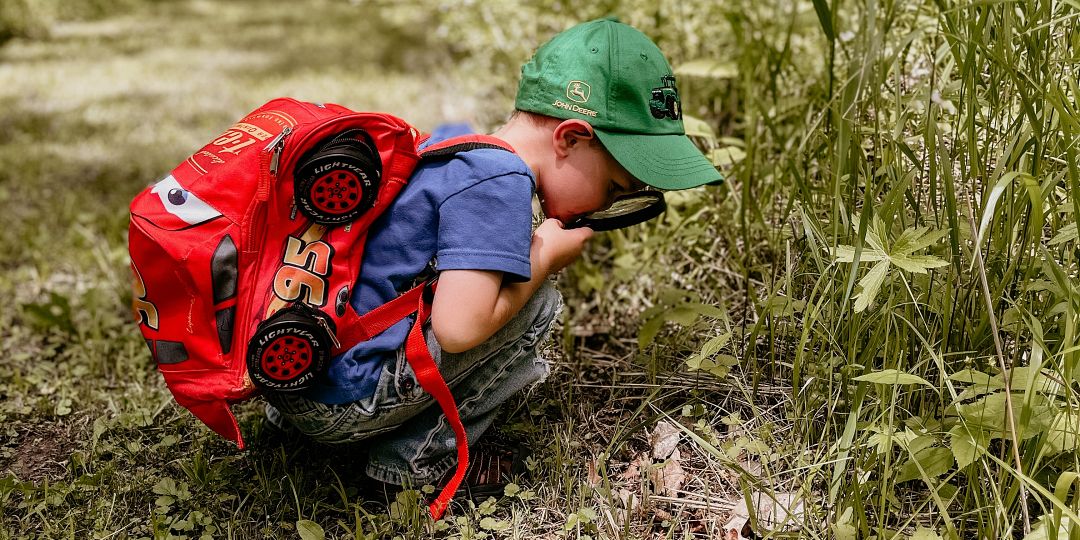
While forest schools specifically focus on connecting kids and nature, here are some of the ways that even conventional schools can add nature into their curriculum:
- Integrated Outdoor Learning: Schools can incorporate subjects like biology, geology, and even history with outdoor lessons, turning local parks or school gardens into interactive classrooms.
- Regular Outdoor Breaks: Encourage students to spend recess or other breaks outside, promoting both physical activity and a connection with nature.
- Establish School Gardens: Gardens are multifunctional, serving as a source of food, a learning environment, and a therapeutic space.
- Field Trips: Regular excursions to natural reserves, farms, or forests can instill appreciation and understanding of diverse ecosystems.
- Nature-Based Extracurricular Activities: Clubs or groups that focus on hiking, bird watching, or even outdoor sports can bridge the nature gap.
- Awareness Campaigns: Educate students and parents about the benefits of nature exposure and the risks of NDD. A community-aware approach can lead to collective action.
Nature-based pre-schools offer holistic developmental benefits and directly combat NDD by bringing kids and nature together. Forest schools are more than just an alternative educational model—they’re a transformative approach that aims to forge a deep bond between children and the environment. By immersing young learners in the rhythms and wonders of nature, these schools not only provide holistic educational experiences but also cultivate environmentally conscious individuals ready to address global challenges.
So What are Nature-Based Preschools Exactly?
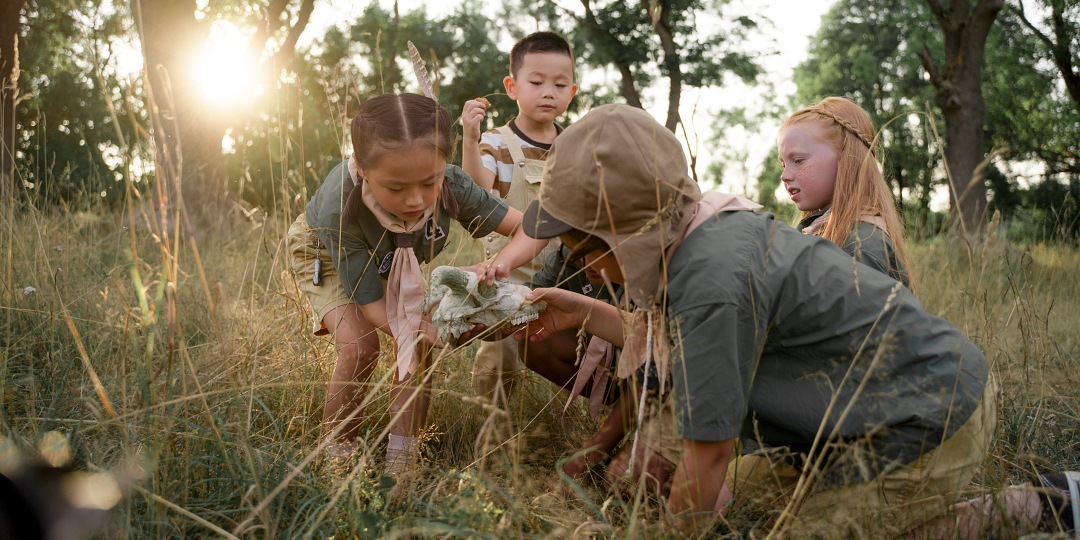
Contrasting with traditional schools, which primarily rely on indoor spaces and structured play, nature-based pre-schools emphasize exploration, hands-on experiences, and the inherent lessons that the natural world offers.
The curriculum, while still focusing on foundational skills, is deeply enriched by the dynamic, ever-changing outdoor environment. In essence, while regular pre-schools often bring nature in through potted plants or occasional outdoor time, nature-based pre-schools take the whole learning experience outside, fostering a direct and consistent connection between children and the natural world.
The Origin of Forest Schools in Europe
The forest school movement, while formalized in the mid-20th century, draws upon a European heritage that has, for millennia, recognized the sanctity and significance of nature.
Denmark is considered to be the birthplace of the forest school concept, Denmark’s early childhood education underwent a paradigm shift in the 1950s. Fueled by the belief that children could benefit immensely from outdoor environments, the “skovbørnehaver” (forest kindergartens) were established. These settings, often devoid of traditional playgrounds or toys, offered children forests, meadows, and streams as their playground. Nature’s elements and cycles became the guiding curriculum, fostering creativity, resilience, and a deep-rooted respect for the environment.
By the 1990s, the forest school philosophy reached the Great Britain, where educators, captivated by its principles, adapted it to the varied landscapes and climates of the United Kingdom.
By introducing environmental values into the educational framework, forest schools aim to build not just knowledgeable minds, but compassionate hearts, reverent souls, and hands that work harmoniously with the earth.
The Growth of Nature-Based Pre-Schools in the U.S.:
The dawn of the 21st century saw the U.S. education system grappling with many challenges, from concerns over standardized testing to rising mental health issues among the youth. As educators and parents sought holistic, child-centered alternatives, the Scandinavian and British success with forest schools provided an enticing solution. Workshops, training sessions, and pilot programs began sprouting, initially as isolated endeavors but gradually coalescing into a more cohesive movement.
While the idea of outdoor education was enticing, it wasn’t without challenges in the U.S. Factors such as varying state regulations, concerns over safety in wilder terrains, and initial skepticism from parents meant that forest school proponents had to be adaptive. As a result, many forest schools often combined the outdoor model with more conventional classroom settings, ensuring a balance and addressing parental concerns.
Diversity of U.S. Nature-Based Schools
One of the most striking attributes of the U.S. is its vast and varied natural expanse. From the misty Appalachian forests in the East to the giant redwoods of California, the arid deserts of the Southwest to the great lakes in the North, the landscapes are as diverse as the people themselves. This incredible geographical diversity lent itself to a myriad of interpretations of the forest school concept.
- Beach Schools on the Coasts: Coastal regions, particularly in states like California, Florida, and Maine, saw the evolution of beach schools where tidal zones, marine life, and coastal ecology became focal points of learning.
- Mountain Schools in the Rockies: In the Rocky Mountain states, the majestic peaks and alpine forests offered lessons on mountain ecosystems, altitude-based plant life, and the unique fauna of these regions.
- Desert Schools in the Southwest: In states like Arizona and New Mexico, forest schools adapted to the desert landscapes. Children learned about cacti, desert flora, and the intricate balance of arid ecosystems.
- Indigenous Influence and Integration: The U.S., with its rich Indigenous cultures, found another layer to add to its forest schools. Collaborations with Indigenous communities brought forth lessons on native plant usage, traditional ecological knowledge, and a deep spiritual bond with the land. Respecting and integrating this ancient wisdom enriched the curriculum and fostered a deeper, more holistic understanding of the environment.
A Day in the Life at a Forest School
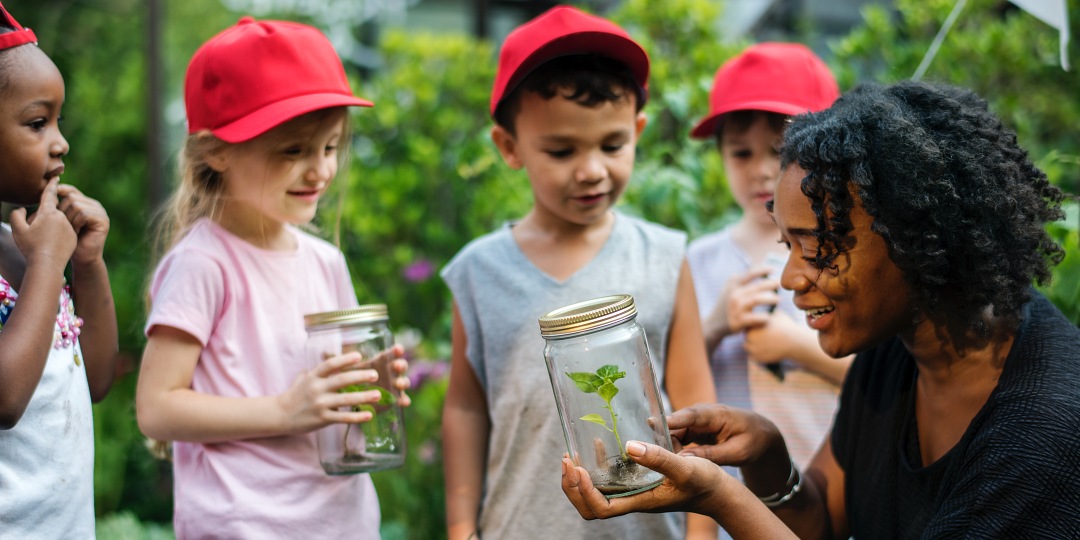
A day at a forest school isn’t just about learning facts or skills; it’s about holistic development. For example, imagine a boy overcoming a fear of insects by observing a caterpillar, or a girl leading a team to build a shelter and discovering her leadership skills. Through every chirp, rustle, and breeze, children at forest schools are not just learning about nature; they’re learning about themselves and their place in this vast, interconnected web of life.
Here’s how one day at a forest school might look:
Morning Gathering:
The day begins with a morning circle, where children and teachers gather, often under a favorite tree or by a bubbling brook. This is a time for greetings, songs, and setting intentions for the day. One day, they might listen to a Native American story about the Redwoods, and on another, they may share personal anecdotes about their favorite animals.
Nature Walk and Exploration:
Guided by their educators, children embark on a nature walk. If in California, they might explore the coastal tide pools, finding starfish and anemones, or venture into the oak woodlands identifying acorns and observing squirrels. Each day offers a new theme or focus. For instance, after a rainy night, they might study the different types of mushrooms that have sprouted or follow the trails of nocturnal creatures.
Skill-building Activities:
Post exploration, children engage in skill-building activities. They might:
- Craft with Natural Materials: Using fallen leaves, bark, or flowers to create nature collages or art.
- Learn Traditional Skills: Perhaps an elder from the local community visits to teach them how to weave baskets from reeds or demonstrates the ancient art of fire-making without matches.
- Climbing and Building: Children might work together to build a makeshift bridge over a stream or climb a particularly challenging tree, learning about physics, teamwork, and their own physical capabilities in the process.
Lunch and Rest Amidst Nature:
Lunchtime isn’t just about eating; it’s an experience in itself. Children might forage for edible plants under supervision, learning about native foods, and then share a communal meal. Post-lunch, they could engage in quiet storytelling or take a restful nap under the shade, absorbing the sounds and rhythms of nature.
Afternoon Deep Dive:
The afternoons could be reserved for deeper exploration or projects. For instance:
- Observing Wildlife: Setting up bird-watching stations or examining pond water under magnifying glasses to study microorganisms.
- Eco-projects: Perhaps they’ve noticed erosion in a part of their woodland area. This could lead to a multi-day project where they learn about soil conservation and plant native shrubs to prevent further erosion.
Closing Circle and Reflection:
As the day comes to a close, the children gather once more. This is a time for reflection, sharing, and gratitude. They might discuss their favorite moments of the day, what they learned, or express their appreciation for a particular tree, animal, or even the wind.
What are skills and attributes that forest schools foster in kids?
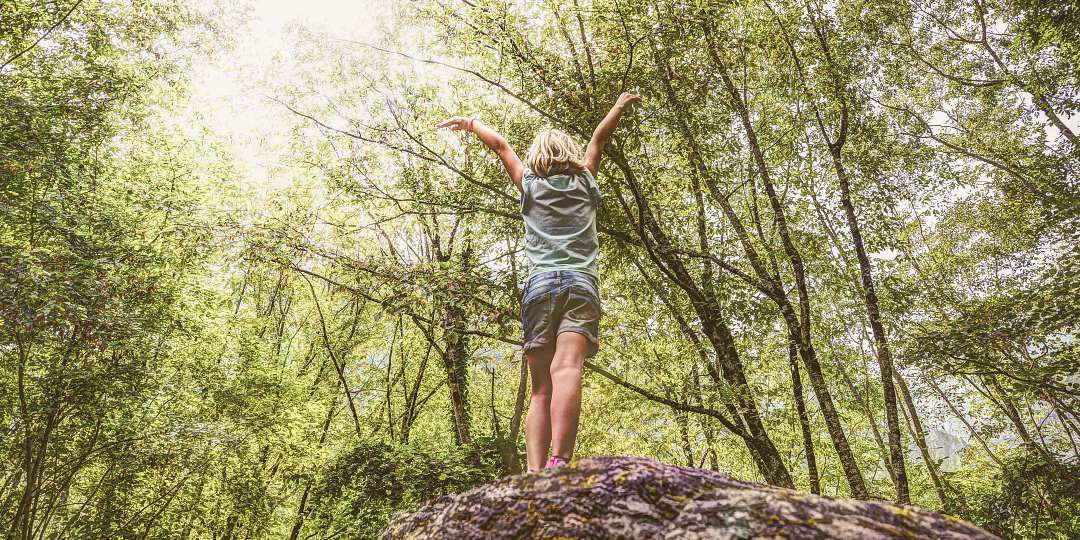
Connecting Children to Nature and Developing an Awareness of Nature
- Fostering a Deep Emotional Bond: When children form emotional connections to the natural world, they are more likely to value and protect it as they grow. Playing by a stream, observing a butterfly’s life cycle, or planting seeds and watching them grow can foster feelings of wonder, responsibility, and love for the environment.
- Direct Experience of Nature’s Fragility: Encountering a wounded animal or witnessing the effects of pollution in a local stream can be powerful lessons for young children. Such direct experiences underscore the impact of human actions on the environment.
- Encouraging Environmental Curiosity: Nature-based schools provide hands-on experiences, prompting children to ask questions about the world around them. This early scientific curiosity can lead to a lifelong pursuit of knowledge and understanding of ecological systems.
- Integrating Indigenous Wisdom: Many forest schools incorporate indigenous knowledge into their curricula, emphasizing the importance of living harmoniously with the land.
- Instilling Sustainability as a Core Value: Learning about nature’s cycles—like decomposition, water cycles, or food chains—can instill a deep understanding of sustainability. Children learn that resources are finite and come to value recycling, reusing, and reducing waste.
Physical & Emotional Benefits to Children:
Beyond academic learning, and some of the lofty longer term goals, forest schools also nurture a child’s physical, emotional, and social growth in the near term.
- Increased Physical Activity: Outdoor environments naturally encourage movement – climbing, running, and jumping – which boosts physical health and motor skills.
- Strengthened Immune System: Regular exposure to nature and dirt can bolster a child’s immune system, making them less susceptible to allergies and certain illnesses.
- Mindfulness and Stress Reduction: The calming influence of nature can help reduce symptoms of ADHD and anxiety, fostering mindfulness and a sense of peace.
- Enhanced Creativity and Problem Solving: Forest schools often present challenges like building shelters or navigating through woods. Such tasks not only develop critical thinking and problem-solving skills but also enable children to see themselves as active solution finders—a mindset vital for addressing larger global issues later in life.
- Building Community and Collaboration: Nature-based learning emphasizes group activities and teamwork. By learning to collaborate and communicate effectively, children are equipped with skills that will serve them for taking future collective action against global challenges.
Empowering a Generation to Address Global Challenges:
It is hoped that children who attend forest schools will grow into adults who see themselves as caretakers of the planet, actively participating in conservation efforts and sustainable practices.
- Social Responsibility: Beyond personal habits, forest school alumni may place environmental considerations at the heart of their community and professional endeavors, whether it’s in business practices, urban planning, or community services.
- Lifelong Learning and Adaptation: As environmental challenges evolve, these individuals are expected to be adaptable learners, always seeking knowledge and solutions to emerging issues.
- Developing Stewardship and Leadership: These children, with their deep-rooted connection to nature, may become future leaders, policymakers, and advocates for strong environmental policies and action against climate change.
Benefits of Forest Schools to Other Stakeholders
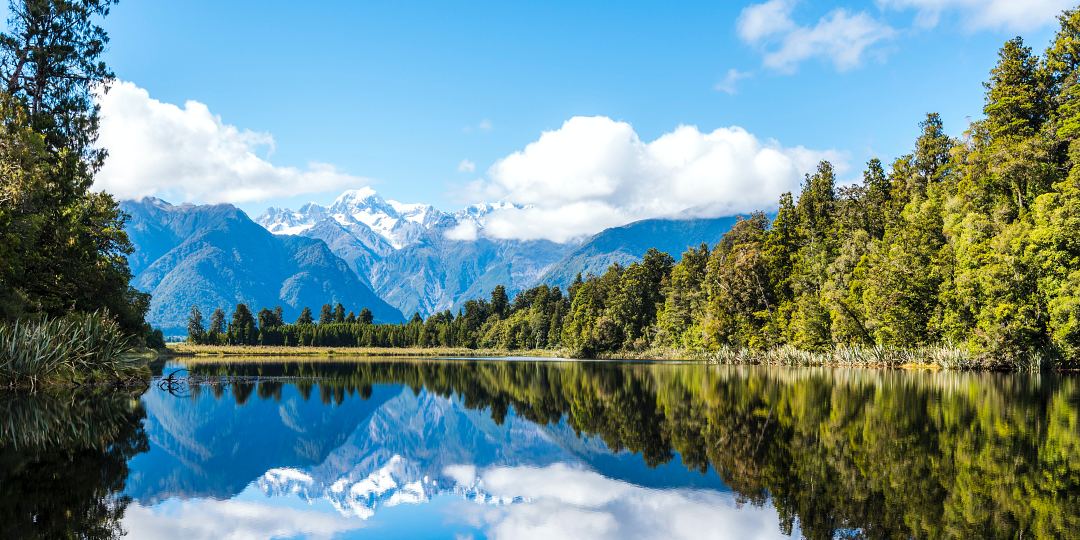
Benefits For Parents:
Every parent seeks the best for their child, hoping for environments that nurture and inspire. Forest schools offer:
- Peace of Mind: Knowing their child is in a holistic and nurturing environment can provide significant comfort.
- Community Building: Forest schools often foster a sense of community among parents, leading to supportive networks and friendships.
- Enhanced Parent-Child Bonding: Parents get a window into their child’s world, understanding their interests and discoveries, leading to enriched conversations and activities even at home.
This approach helps bridge the gap between home and school, forging stronger family ties and community connections.
Benefits For the Education Sector:
The educational landscape is ever-evolving, seeking methods that resonate with the contemporary world. Forest schools introduce:
- Diversified Learning Methodologies: Forest schools introduce alternative teaching and learning methods, promoting a more diverse and inclusive educational landscape.
- Reduced Classroom Management Issues: Many educators find that behavioral issues diminish in outdoor settings where children feel more free and engaged.
- Increased Engagement: The hands-on, experiential nature of forest schooling often leads to heightened interest and enthusiasm for learning.
- Professional Development: Teachers also benefit from continuous learning, adapting to new teaching environments and methodologies.
Such schools highlight the potential for growth and evolution in our educational methodologies, ensuring the sector remains dynamic and responsive.
Benefits For Society:
In the grand tapestry of society, each thread plays a crucial role. Forest schools contribute by:
- Building Future Environmental Stewards: Children with a profound connection to nature are more likely to become adults who value and protect the environment.
- Reduced Health Care Strain: Healthier, more active children can lead to a decrease in childhood obesity and related health issues, which benefits society as a whole.
- Cultivating Community Values: Forest schools often instill values of cooperation, community building, and mutual respect, qualities that can influence broader societal attitudes.
Such schools are not just shaping individuals; they are molding future communities and influencing societal values.
Benefits For the Environment:
Forest schools help protect the environment in the following ways:
- Nature Appreciation: By fostering love and respect for nature, these institutions ensure that future generations recognize the value of preserving and caring for our environment.
- Ecosystem Conservation: Forest schools often participate in conservation activities, such as planting trees or cleaning up natural spaces, directly benefitting local ecosystems.
- Promotion of Biodiversity: Through their curriculum, these schools can indirectly promote the importance of varied and diverse plant and animal life, leading to more robust ecosystems.
- Lower Carbon Footprint: Nature-based schools often have a minimalistic approach, utilizing natural resources, which can mean less energy consumption compared to traditional school settings.
In essence, the forest school movement does not merely represent a change in education; it signifies a transformation in how we relate to our world. By recognizing the intrinsic value of nature in our formative years, we pave the way for a more harmonious and sustainable future.
Conclusion:
The forest school movement does more than modify education; it transforms our relationship with the world around us. As we delve deeper into the myriad benefits, it becomes evident that such schools aren’t merely an educational alternative; they’re a beacon for a more harmonious future.
Call to Action:
For parents and educators reading this, consider exploring your local forest school options. Even if you’re part of a more traditional school system, there are always ways to incorporate elements of nature-based learning into your curriculum.
Resources and Further Reading:
For those intrigued by the forest school movement, delve deeper into these recommended reads and websites to understand more about nature-based education and its global impact.
Books on Nature-Based Education:
- Last Child in the Woods: Saving Our Children from Nature-Deficit Disorder by Richard Louv
- The Nature Principle: Reconnecting with Life in a Virtual Age by Richard Louv
- Forest School and Outdoor Learning in the Early Years by Sara Knight
- Nature Preschools and Forest Kindergartens: The Handbook for Outdoor Learning by David Sobel
Please note: These book titles link to Amazon. As an Amazon Associate, Republic of Green earns from qualifying purchases. If you make a purchase from these links, RoG will make a small commission, which does not affect your price.
Websites about Nature-Based Schools:
- The North American Association for Environmental Education (NAAEE) – A hub for environmental education resources, including forest schooling.
- Forest School Association – The UK’s professional body for forest school practitioners. While UK-centric, it offers a wealth of resources and perspectives that can be applied universally.
- Children & Nature Network – Founded by Richard Louv, this network offers resources, research, and initiatives to connect children, families, and communities to nature.
Videos About Nature-Based Education:
- “Nature Kindergarten” | Frances Krusekopf | TEDxVictoria – Talk delves into the concept and benefits of nature-based kindergarten programs.
- “Nature Deficit Disorder” | KQED QUEST – The San Francisco Bay Area public TV program explores why we need nature, and efforts to encourage children to play outdoors./li>
- “Forest schools: Lessons in outdoor education” | CBS Sunday Morning – Correspondent Conor Knighton visits an immersive forest school in Oregon, where being outdoors all day – even in inclement weather – becomes part of the learning process.
These resources can provide valuable insights and perspectives on nature-based education, its significance, and practical applications. Whether you’re an educator, parent, or simply someone interested in alternative educational approaches, they’re well worth a delve.
Find a Forest School Near You:
To find a forest school near you, please visit Forest Schools in the Republic of Green Directory for a list of nature-based pre-schools and kindergartens.
Please note, this list may not be complete, and, as always, you should do your own research on the quality and suitability of the programs for your family.
- 30 Environmental Activities to Feed Your Mind, Body & Soul - December 19, 2023
- Exploring the Wonders of Dark Sky Parks: A Stargazer’s Paradise - December 19, 2023
- Biodiversity Loss – A Crisis in the Making - December 12, 2023
